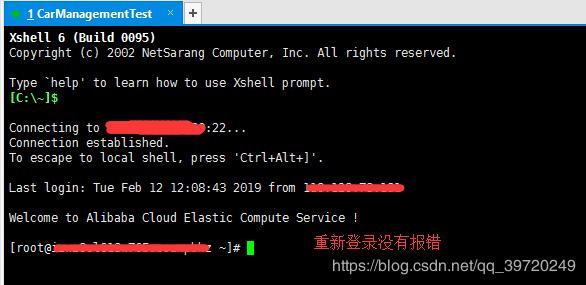

X11 connection rejected because of wrong authentication. Next, connect to the SSH server which is enabled X11 Forwarding.

After installing Xming, start Putty and select X11 on the left menu and check a box Enable X11 forwarding on the right pane. Launch X Applications Through an SSH Tunnel (X11 Forwarding) Overall, XShell is a powerful terminal emulator with lots of features that are not available with its competitors.
#Xshell forwarding download#
It also allows ASCII file uploads, automatic session logging, among others. When I try to establish an X11-forwarding connection to myserver, I get the following error: ssh -X myserver xlogo X11 connection rejected because of wrong authentication. Download it (Xming-setup.exe) from the site below and install. It can be used for sending and receiving files via ZMODEM and SFTP.
#Xshell forwarding windows#
This program provides users with access to Unix/Linux hosts as well as Windows workstations. Use the feedback form below to ask any questions or share your thoughts with us.Xshell is a Windows terminal emulator application for Telnet, SSH, Rlogin.
#Xshell forwarding how to#
That’s all for now! In this article, we have demonstrated how to access a remote server via a jump host. The above command will first open an ssh connection to vps1 in the background effected by the Prox圜ommand, and there after, start the ssh session to the target server contabo.įor more information, see the ssh man page or refer to: OpenSSH/Cookbxook/Proxies and Jump Hosts. Then try to access your target host as shown. Where the command Proxy Command ssh -q -W %h:%p vps1, means run ssh in quiet mode (using -q) and in stdio forwarding (using -W) mode, redirect the connection through an intermediate host ( vps1). In this example, the target host is contabo and the jumphost is vps1. The second method is to use the Prox圜ommand option to add the jumphost configuration in your ~.ssh/config or $HOME/.ssh/config file as shown. Now try to connect to a target server via a jump host as shown. Therefore you need to add the following static jumphost ‘routing’ in ~/.ssh/config file and specify the host aliases as shown. Static jumphost list means, that you know the jumphost or jumphosts that you need to connect a machine. The same syntax can be used to make jumps over multiple servers. If usernames or ports on machines differ, specify them on the terminal as shown. This tells ssh to make a connection to the jump host and then establish a TCP forwarding to the target server, from there (make sure you’ve Passwordless SSH Login between machines). The simplest way to connect to a target server via a jump host is using the -J flag from the command line. There is a number of valid reasons why jumphosts are needed. In above scenario, you want to connect to HOST 2, but you have to go through HOST 1, because of firewalling, routing and access privileges.


 0 kommentar(er)
0 kommentar(er)
